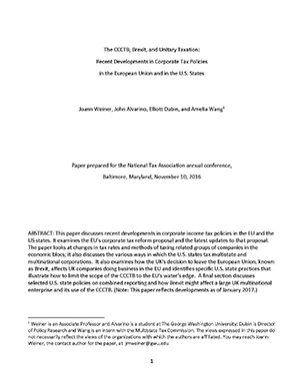
The European Commission is pursuing its plan to introduce a common tax system for companies doing business across the European Union. That system would simplify the tax base calculations for thousands of EU companies, which now must comply with 28 different sets of tax rules throughout the European Union. The proposal would establish a common tax base as a first phase, and in a second phase, would require companies to consolidate their EU operations into a single corporate entity. The companies would then distribute the tax base throughout their operations in the European Union using a formula based on the location of the company’s assets, employees, and sales.
The European Commission derived significant aspects of its proposal from the experiences in the U.S. states. This experience has helped guide the Commission, especially in the areas of determining the consolidated, or combined, group and the composition of the apportionment formula.
As the EU refines its corporate tax reform proposal, the U.S. states will continue to provide valuable guidance. This guidance may be especially helpful in the complicated aftermath of the UK exiting the European Union. A paper by Professor Joann Weiner, Elliott Dubin, John Alvarino, and Yameng (Amelia) Wang, “The CCCTB, Brexit, and Unitary Taxation: Recent Developments in Corporate Tax Policies in the European Union and in the U.S. States,” which was presented at the Annual Meeting of the National Tax Association on November 10, 2016, shows the linkages between corporate taxation in the EU and in the U.S. states.
Click here , to read the paper.
